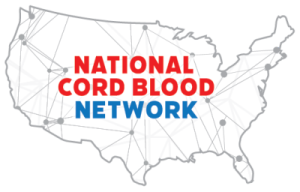You are here
Why We Need the National Cord Blood Network
 In February 2024, a press release went out that a new organization called the National Cord Blood Network had been formed. What is this new network and why does the cord blood community need another organization?
In February 2024, a press release went out that a new organization called the National Cord Blood Network had been formed. What is this new network and why does the cord blood community need another organization?
The National Cord Blood Network is designed to be an organization run by medical doctors for medical doctors. The membership consists of hematologists and oncologists that are experienced at working with cord blood as a graft source for transplantation, who will devote their time and effort to train other physicians on best practices for selecting and utilizing cord blood grafts and products in their arsenal of therapies.
 Members of the cord blood community already work with multiple organizations that provide education and training around cord blood, but none of the existing organizations fills the role for which the National Cord Blood Network was created. We have the Parent’s Guide to Cord Blood Foundation (PGCB), which educates parents worldwide about cord blood, and runs a monthly newsletter with community news. We also have Save the Cord Foundation, which educates parents in the US, and runs webinars. There are two professional societies that accredit cord blood banking practices, the Association for the Advancement of Blood & Biotherapies (AABB), as well as the Foundation for the Accreditation of Cellular Therapy (FACT). The Cord Blood Association serves as a professional association for cord blood banks. Those cord blood banks that list donations for transplant will also join registries such as NMDP (aka Be The Match) or World Marrow Donor Association (WMDA). For medical professionals, there are quite a few organizations and conferences which, in theory, cover the topic of developing cord blood as a therapeutic resource, including but not limited to the American Society of Hematology (ASH), the American Society for Transplantation and Cellular Therapy (ASTCT), and so forth and so on.
Members of the cord blood community already work with multiple organizations that provide education and training around cord blood, but none of the existing organizations fills the role for which the National Cord Blood Network was created. We have the Parent’s Guide to Cord Blood Foundation (PGCB), which educates parents worldwide about cord blood, and runs a monthly newsletter with community news. We also have Save the Cord Foundation, which educates parents in the US, and runs webinars. There are two professional societies that accredit cord blood banking practices, the Association for the Advancement of Blood & Biotherapies (AABB), as well as the Foundation for the Accreditation of Cellular Therapy (FACT). The Cord Blood Association serves as a professional association for cord blood banks. Those cord blood banks that list donations for transplant will also join registries such as NMDP (aka Be The Match) or World Marrow Donor Association (WMDA). For medical professionals, there are quite a few organizations and conferences which, in theory, cover the topic of developing cord blood as a therapeutic resource, including but not limited to the American Society of Hematology (ASH), the American Society for Transplantation and Cellular Therapy (ASTCT), and so forth and so on.
While many organizations support cell therapy and transplantation, their mission statements forces them to be “agnostic” about the source of the cells. They may publish guidelines for the use of cord blood, but they do not promote using cord blood.
 Promoting the use of cord blood is not just a self-serving motivation that will support the cord blood industry. Promoting the use of cord blood should increase patient access to transplants and thereby save lives. Every year, over 12 thousand patients search the NMDP registry to find a matching donor for a stem cell transplant1. Yet each year, only about 6 thousand of those patients receive a transplant1. Studies have shown that the use of cord blood to overcome mismatches between patient and donor will increase access to transplantation, especially for minority patients2,3. And, as cord blood grafts are already collected and stored, they can help patients who need urgent transplants.
Promoting the use of cord blood is not just a self-serving motivation that will support the cord blood industry. Promoting the use of cord blood should increase patient access to transplants and thereby save lives. Every year, over 12 thousand patients search the NMDP registry to find a matching donor for a stem cell transplant1. Yet each year, only about 6 thousand of those patients receive a transplant1. Studies have shown that the use of cord blood to overcome mismatches between patient and donor will increase access to transplantation, especially for minority patients2,3. And, as cord blood grafts are already collected and stored, they can help patients who need urgent transplants.
The idea to form a National Cord Blood Network is the brainchild of Juliet Barker, MBBS, Director of Transplantation and Cell Therapy at Weill Cornell-NewYork Presbyterian Hospital. Dr. Barker has published repeatedly on the importance of improving transplant access for patients from minority ethnic backgrounds or underserved racial/ethnic populations2. She serves as the founding medical chair of the National Cord Blood Network. The medical co-chair is Andromachi Scaradavou, MD, an expert in pediatric stem cell transplants at MSK Cancer Center.
 “The launch of the National Cord Blood Network marks a significant milestone in our collective effort to enhance access to innovative cord blood transplantation practices, particularly for patients from minority communities and underserved populations” stated Dr. Juliet Barker. “With a focus on strategic collaborations, the Network aims to revolutionize the way we approach cord blood transplantation in the US. This effort has the potential to broaden the accessibility and efficacy of life-saving treatments for patients battling leukemia and other life-threatening bone marrow diseases”.
“The launch of the National Cord Blood Network marks a significant milestone in our collective effort to enhance access to innovative cord blood transplantation practices, particularly for patients from minority communities and underserved populations” stated Dr. Juliet Barker. “With a focus on strategic collaborations, the Network aims to revolutionize the way we approach cord blood transplantation in the US. This effort has the potential to broaden the accessibility and efficacy of life-saving treatments for patients battling leukemia and other life-threatening bone marrow diseases”.
The founding administrator of the National Cord Blood Network was Marcie Finney, MS MBA, then the executive director of the Cleveland Cord Blood Center. In her words, “I wanted to take Juliet’s idea and operationalize it”. Starting in 2025, the executive role was taken over by Christina Melief, PhD, who has an extensive background in business development of stem cell transplant programs.
The primary audience of the National Cord Blood Network is US transplant centers. The authority of the National Cord Blood Network comes from their participating transplant doctors. Their first goal is to engage with several US transplant centers for continuing medical education programs that will train oncologists to work with cord blood grafts and products. They plan to set up a mechanism to connect medical professionals who need advice from a colleague, as well as provide support to them to develop and strengthen cord blood transplant programs.
With time, the National Cord Blood Network may expand its focus and operations. The founders have been shocked by the swell of grassroots interest they have received in the form of sign-ups for membership and mailings. Currently, the membership is only designed for hematologists and oncologists. The fledgling network has received philanthropic support that will enable the member doctors to devote protected time to serving the organization. Hopefully in the future they will raise additional grants from health funding agencies and from health equity foundations. Once established in the United Sates, the “National” Cord Blood Network can offer services more globally.
In the US and several other countries, substantial investment has gone into building a national cord blood inventory and registry service4,5. This investment represents both taxpayer money and public good will. In the case of the US, an independent study by the RAND Corporation found that the annual benefit to society justifies the annual cost to maintain a cord blood inventory for transplants4. The newly established National Cord Blood Network will fill an unmet need in the coordination of these resources by training the next generation of physicians in the optimal utilization of cord blood transplants.
References
- Health Resources and Services Administration (HRSA). Fiscal Year 2021 Annual Progress Report on the C.W. Bill Young Cell Transplantation Program and National Cord Blood Inventory Program. Report to Congress.
- Barker JN, Boughan K, Dahi PB, Devlin SM, Maloy MA, Naputo K, ... Politikos I. Racial disparities in access to HLA-matched unrelated donor transplants: a prospective 1312-patient analysis. 2019; Blood Advances 3(7):939-944.
- Verter F. ExCellThera Can Improve Patient Access to Cord Blood Transplants. Parent's Guide to Cord Blood Foundation Newsletter published 2022-09
- Verter F. RAND Corporation report on Public Cord Blood Banking Industry. Parent's Guide to Cord Blood Foundation Newsletter published 2017-11
- Anonymous. Brazil Squandering Potential of National Umbilical Cord Blood Inventory. Parent's Guide to Cord Blood Foundation Newsletter published 2024-02


